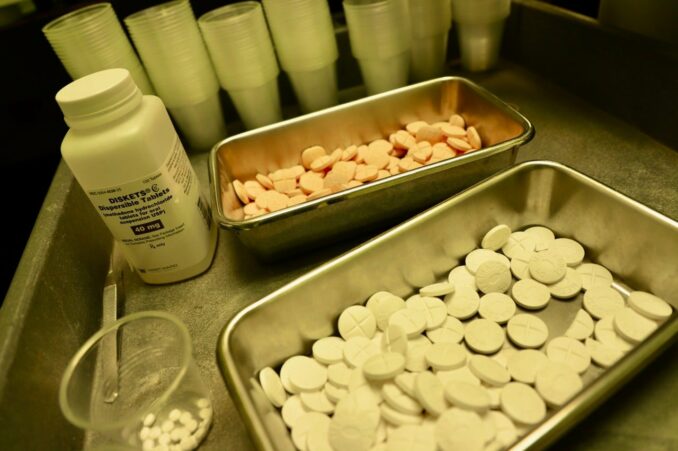Methadone: Harm or help?
Methadone. The medicine stirs up controversy just by being brought up. Does methadone help or harm the addicted person? Does it count as recovery, or is it trading one addiction for another? These questions — and more — are all very important to consider.
Another thing to consider is methadone’s role in society: a powerful medicine that treats the dreaded opioid addiction. Addiction is a disease that has no known cure, but methadone can effectively treat it and get patients to a place that they consider recovery.
We must look at how methadone works in the body to show how it’s so effective. When regular opioids enter the bloodstream and brain, they attach to mu-opioid receptors (MORs) in the brain, producing dependence and addiction, while causing withdrawal when the use of opioids stops.
 Methadone acts in this same way; it binds to the MORs and does not let go, meaning other opioids can’t get the patient high. However, finding the right dosage of methadone might be difficult. If you don’t receive enough, then you go into withdrawal; and if you receive too much, you go into overdose. It requires trained and skilled doctors to help patients find that perfect balance.
Methadone acts in this same way; it binds to the MORs and does not let go, meaning other opioids can’t get the patient high. However, finding the right dosage of methadone might be difficult. If you don’t receive enough, then you go into withdrawal; and if you receive too much, you go into overdose. It requires trained and skilled doctors to help patients find that perfect balance.
Therefore, the use of methadone reduces the risks of overdose on other opioids; if the patient is less likely to inject other opioids, then their risk of contracting HIV/AIDS or hepatitis C via drug injection is lowered. Over a million people suffer from opioid addiction, yet relatively few of them receive methadone, even though it is truly the gold standard in addiction treatment.
Methadone is a medication necessary in every health care system because of its impressive record in treating drug addiction. The success rate of methadone — while not entirely clear — is somewhere between 60% and 90%. An abstinence-only approach has a success rate of up to 10%.
The main problem that arises is that methadone is highly stigmatized. Instead of being viewed as a tool of recovery, it is seen as an addiction all on its own, which is wrong. But we must look at stigmatization against methadone to see how it is actually a very important medication.
NIMBYs, abstinence and drug makers
“Not in my back yard” movements in cities like Philadelphia have been actively trying to stigmatize and eliminate the use of methadone, while ignoring how many people are helped and how effective the medication is. They view methadone as a public nuisance and are often fueled by racism.
Another source of methadone stigma comes from the recovery world itself. The fellowship of Narcotics Anonymous published Bulletin 29, “Regarding Methadone and Other Drug Replacement Programs,” a screed against methadone and the people on methadone. It states: “Our program approaches recovery from addiction through abstinence, cautioning against the substitution of one drug for another. That’s our program; it’s what we offer the addict who still suffers.”
A similar “Just Say No” campaign prevalent in the 1980s and early 1990s as part of the “War on Drugs” did little to stem drug use, yet it gave politicians ammunition to pass more “get tough on crime” legislation that caused mass incarceration to skyrocket.
With much of the recovery community against methadone, one drug maker helped push the stigma along. Alkermes — maker of Vivitrol (naltrexone injection) — pushes its lobbyists to paint methadone and buprenorphine as dangerous and irrationally abusable, which is not the case. Even when methadone is diverted, it still saves people from the pain of opioid withdrawal. It’s not being abused or misused. On the other hand, Vivitrol is responsible for overdose deaths, when patients end or attempt to end that method of treatment.
Methadone maintenance treatment is an important drug addiction treatment that succeeds at high rates but gets little credit for saving the lives of many people who use it. On top of helping to prevent diseases like HIV and HCV, it is responsible for improving the psychological health of patients who take it.
According to a study done in the New England Journal of Medicine at the start of the methadone treatment phase, several patients were found to have stopped engaging in criminal activity. In the book “The Effectiveness of Methadone Treatment,” authors John C. Ball and Alan Ross established that there was a 79% decrease in the number of criminal offenses committed by patients on methadone.
Methadone can improve the lives of everyone who needs it if they’re given the chance to take it. It helps to decrease the spread of disease and provides patients with the structure needed to get psychiatric help for other diseases. Methadone is a medical necessity and needs to be treated like it, without stigma attached to it from anyone.
Methadone will remain critical until we have a socialist society that can truly address the root societal causes of drug addiction and abuse and find a permanent cure.

